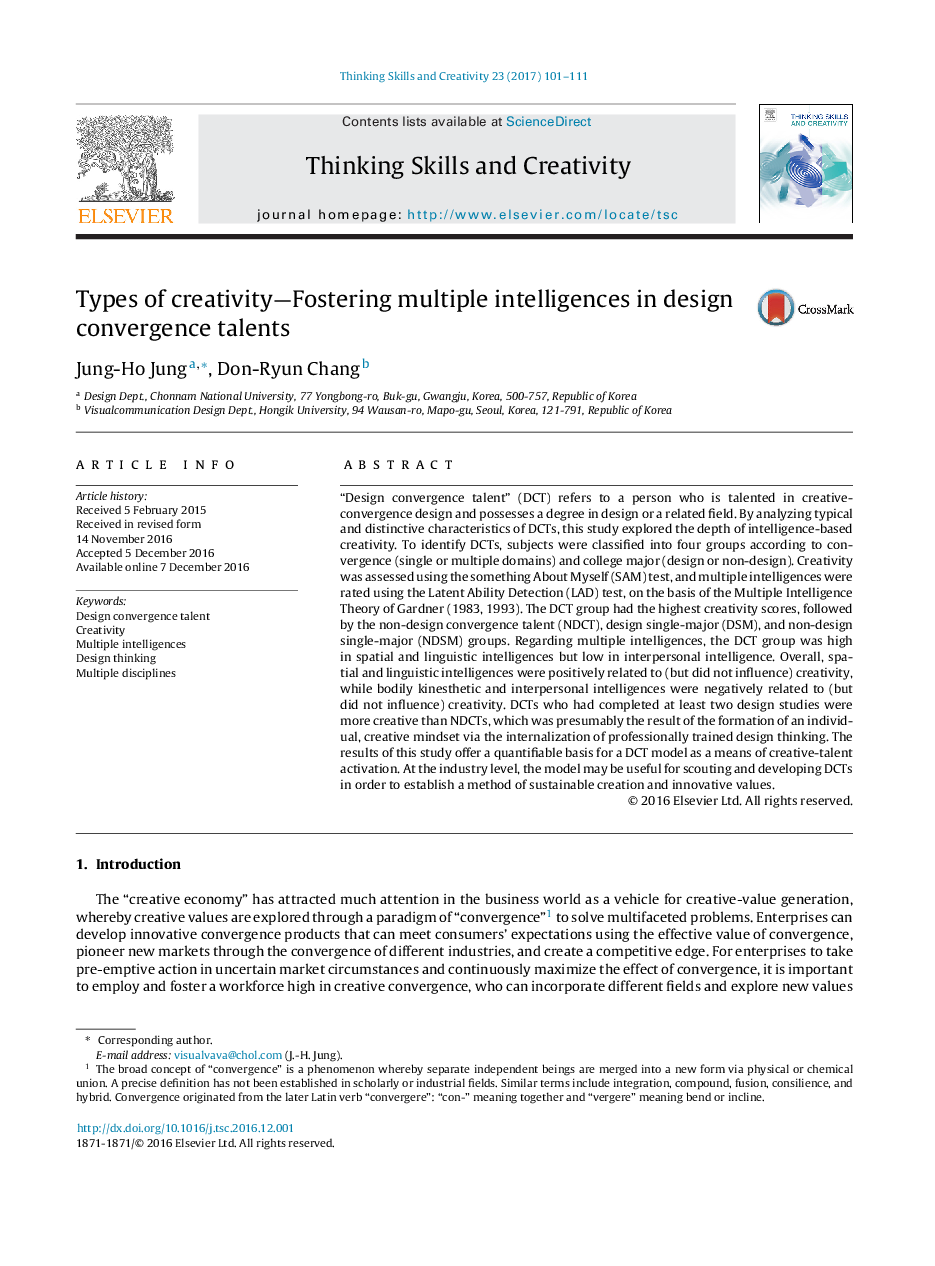| کد مقاله | کد نشریه | سال انتشار | مقاله انگلیسی | نسخه تمام متن |
|---|---|---|---|---|
| 4941832 | 1436836 | 2017 | 11 صفحه PDF | دانلود رایگان |

- Design convergence talent (DCT) is with a degree in design or other academic field.
- Explored creative-type persons by intelligence-based creativity.
- Highest level of creativity was scored by the DCT group.
- DCT group stood out in spatial intelligence and linguistic intelligence.
- Bodily-kinesthetic and interpersonal intelligences positively influenced creativity.
“Design convergence talent” (DCT) refers to a person who is talented in creative-convergence design and possesses a degree in design or a related field. By analyzing typical and distinctive characteristics of DCTs, this study explored the depth of intelligence-based creativity. To identify DCTs, subjects were classified into four groups according to convergence (single or multiple domains) and college major (design or non-design). Creativity was assessed using the something About Myself (SAM) test, and multiple intelligences were rated using the Latent Ability Detection (LAD) test, on the basis of the Multiple Intelligence Theory of Gardner (1983, 1993). The DCT group had the highest creativity scores, followed by the non-design convergence talent (NDCT), design single-major (DSM), and non-design single-major (NDSM) groups. Regarding multiple intelligences, the DCT group was high in spatial and linguistic intelligences but low in interpersonal intelligence. Overall, spatial and linguistic intelligences were positively related to (but did not influence) creativity, while bodily kinesthetic and interpersonal intelligences were negatively related to (but did not influence) creativity. DCTs who had completed at least two design studies were more creative than NDCTs, which was presumably the result of the formation of an individual, creative mindset via the internalization of professionally trained design thinking. The results of this study offer a quantifiable basis for a DCT model as a means of creative-talent activation. At the industry level, the model may be useful for scouting and developing DCTs in order to establish a method of sustainable creation and innovative values.
Journal: Thinking Skills and Creativity - Volume 23, March 2017, Pages 101-111